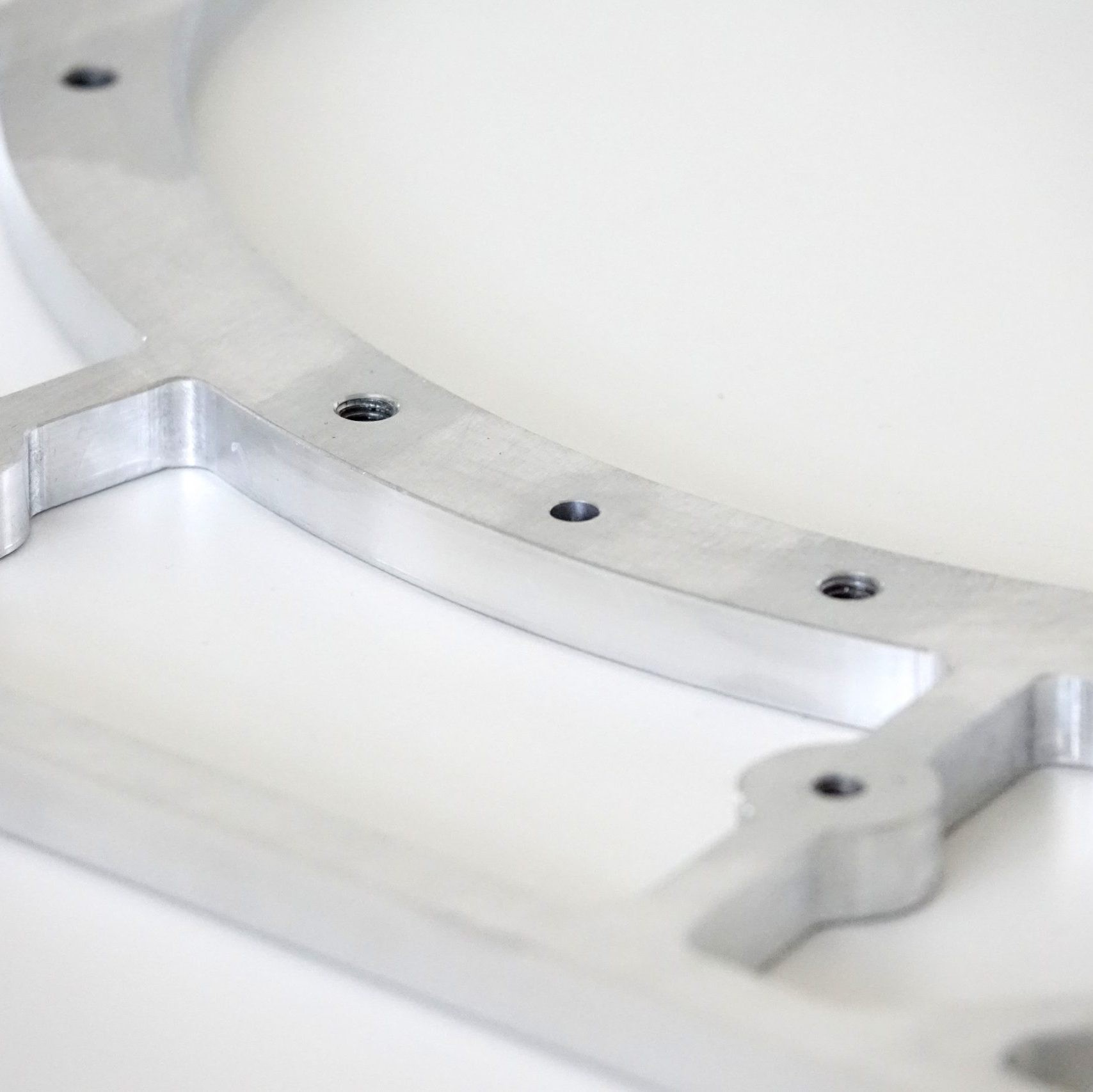CNC milled parts are our crown jewels in mechanical engineering. If we didn’t need superior finishes, design freedom and/or tight tolerances, we could confidently go to less expensive manufacturing processes like welding or sheet metal edging. It’s great that CNC milling is available for precise and exact requirements.
While CNC milling doesn’t have to be more expensive than other processes, especially for small batches and prototypes, the ability to choose finer tolerances than other processes often leads designers to tolerate parts too closely to be “on the safe side.” Probably no designer has ever been fired because he demanded too precise parts. The other way around, however, is a different story.
Nevertheless – tight tolerances are expensive. It is worth considering exactly which tolerances are actually necessary in order to reduce costs. We would like to give some advice here on tolerance selection in CNC-milling.
Fits according to ISO-286-1/2 for milled parts
The most common tolerances originate from fit requirements. Fits refer to the dimensional relationships of parts to each other having the same nominal dimension. Easy to imagine is the movement of a shaft in a bore with the same diameter. Even if the nominal dimension is the same, in reality there is always a difference in the actual dimension.
The aim of the fit definition is to classify the tolerance zones of both the bore and the shaft in order to achieve a defined behavior through the interaction of the two tolerance zones. Terms and systematics can be found in ISO-286-1. Limit dimensions are described in ISO-286-2.
The interaction of the two fits can be divided into three categories:
- Clearance fit: Clearance fits result in a gap between the components despite the maximum dimension of the shaft and the minimum dimension of the bore. The resulting movement behavior can range from ample clearance to a dimension where the parts can just be moved against each other by hand.
- Interference or press fit: In an interference fit, the minimum dimension of the shaft is always greater than the maximum dimension of the bore. Thus, a plastic deformation of the components (albeit sometimes slight) is always necessary for mutual displacement. Accordingly, parts are often pressed in this way.
- Transition fit: Transition fits are located between clearance fit and interference fit. Depending on the resulting dimension of the individual tolerance zones, either a clearance fit or a transition fit can be produced. Often, such parts can still be moved against each other with light impacts, which is why they are often used for gears and couplings.
In principle, the aim is always to design one of the two fit partners in a standard system. For bores, this can be the unit system H7 (“unit bore”), whereby the fit clearance can be set by defining a suitable shaft fit. For standardshafts (rather unusual in practice) this is the fit field h6, where the bore fit defines the fit clearance.
At InstaWerk, we produce fits according to drawings for online orders. Unlike shaft fits, which can be adjusted flexibly and with little effort in CNC turning, bore fits in milling require special reamers for each individual diameter. This increases costs and should be chosen wisely. We check the feasibility of fits individually according to the drawing template and will repare an adapted offer if the online calculation does not correctly recognize the tolerance requirements.
General tolerances according to ISO 2768-1 for milling: Linear dimensions
Dimensions define the shape and position of elements in a component in relation to each other. Therefore, dimensional tolerances are often the elementary reference value of quality. If a complete system is assembled from individual components, the overall tolerance of the assembly often results from the tolerance chain of the individual components and the linear dimensions. At InstaWerk, we are guided by ISO 2768-1, see Table 1. Although this standard specifies another “very coarse” tolerance class, this is not useful for milling and has been omitted.
In addition, ISO 2768-1 also specifies limit dimensions for radii and chamfers (Table 2) and for angular dimensions (Table 3). For the limiting dimensions of radii, chamfers and angles, the values for the tolerance classes fine and medium are identical.
Limit dimensions for length dimensions in mm for nominal dimension range in mm (Table 1)
| Tolerance class | 0,5 to 3 | over 3 to 6 | over 6 to 30 | over 30 to 120 | over 120 to 400 | over 400 to 1000 |
|---|---|---|---|---|---|---|
| f (fine) | ± 0,05 | ± 0,05 | ± 0,10 | ± 0,15 | ±0,2 | ± 0,3 |
| m (medium) | ± 0,10 | ± 0,10 | ± 0,20 | ± 0,30 | ± 0,5 | ± 0,8 |
| c (rough) | ± 0,20 | ± 0,30 | ± 0,50 | ± 0,80 | ± 1,2 | ± 2,0 |
Limit dimensions for radii and chamfers in mm for nominal dimension range in mm (Table 2)
| Tolerance class | 0,5 to 3 | over 3 to 6 | over 6 to 30 | over 30 to 120 | over 120 to 400 |
|---|---|---|---|---|---|
| f (fine) | ± 0,2 | ± 0,5 | ± 1,0 | ± 2,0 | ± 4,0 |
| m (medium) | ± 0,2 | ± 0,5 | ± 1,0 | ± 2,0 | ± 4,0 |
| c (rough) | ± 0,4 | ± 1,0 | ± 2,0 | ± 4,0 | ± 8,0 |
Limit dimensions in angular units for nominal dimension range of the shortest leg in mm (Table 3)
| Tolerance class | 0 to 10 | over 10 to 50 | over 50 to 120 | over 120 to 400 | over 400 |
|---|---|---|---|---|---|
| f (fine) | ± 1° | ± 30' | ± 20' | ± 10' | ± 5' |
| m (medium) | ± 1° | ± 30' | ± 20' | ± 10' | ± 5' |
| c (rough) | ± 1° 30' | ± 1° | ± 30' | ± 15' | ± 10' |
Particularly with very large dimensions, it is therefore more difficult to comply with the finest tolerance requirements, even with modern machines. If the customer specifies tolerances in the drawing that exceed the selected tolerance class, these are checked for feasibility and any necessary price surcharges. .
In DIN 55350, part 11, quality is defined as the “condition of a unit with regard to its suitability to fulfill specified and presupposed requirements”. The task of the designer is therefore first to define the requirements as a starting point for the quality and thus for the tolerances. Since we as contract manufacturers rarely have insight into the requirements and priorities of the developers, we also use the tolerance requirements as technical communication between the manufacturer and the customer.
The achievable length tolerances are mainly determined by the component size and the selected machine type. As a guideline, for dimensions up to 500mm, 0.01mm without remeasurement and multiple operations is already challenging.


